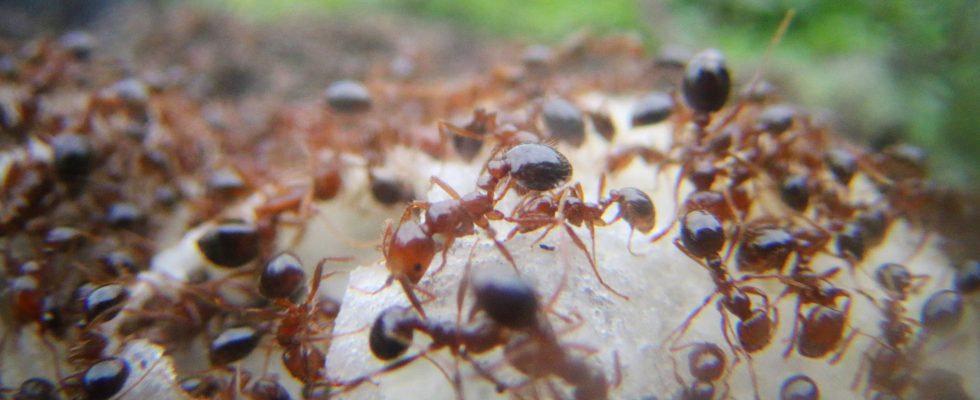It is one of the most invasive species in the world. The fire ant, Solenopsis invicta from its scientific name, was observed for the first time in Europe in recent weeks. According to a study published Monday September 11 in the journal Current Biology88 nests of the species have been identified in the province of Syracuse, Sicily (Italy).
The Old Continent had until now been spared the proliferation of this species of ant native to Latin America and already present in Australia, the United States, China, Mexico and the Caribbean. “Solenopsis invicta is one of the worst invasive species. It can spread alarmingly quickly,” one of the study’s authors, Mattia Menchetti, a researcher at the Spanish Institute of Evolutionary Biology, said in a statement. “Finding this species in Italy was a big surprise, but we knew this day would come,” he added.
According to the authors of the same study, red fire ants had already been discovered in products imported into Spain, Finland and the Netherlands. However, a colony had never been observed or confirmed in Europe before.
An invasive and devastating species
The researchers said they don’t know exactly how this fire ant ended up in the Syracuse suburbs, but assume its arrival is linked to a transit area with intense human activity, including that of the city’s port. Local people told scientists that ant stings – painful and irritating – had increased since 2019. Its venom can cause a rash and allergic reactions, potentially leading to anaphylactic shock.
According to scientists, 7% of the European continent would be suitable for the installation of this predatory ant. Its presence has a negative impact on the environment. “It is one of the 100 most invasive, most problematic species in the world,” explained entomologist Philippe Nicolas, director of studies at the CNRS, on the plateau of BFMTV. “It is a species which has a broad ecological balance, it is capable of living near homes, but also in crops. And it is very difficult to eradicate it,” he continued. “In the places where he settles, [cet insecte] causes a reduction in the diversity of invertebrates and small vertebrates”, warned Mattia Menchetti during the presentation of the study. This species of ant in fact has the capacity to attack other species, to the point of deregulating the fauna and flora of the territories where it proliferates.
6 billion euros in losses in the United States
Solenopsis invicta is characterized by scientists as an omnivorous and generalist predator. Its prey range is wide. “It directly attacks different parts of the plant such as the roots, fruits, flowers and stems,” summarizes Mattia Menchetti in the columns of Science and Future. The fire ant is the fifth most expensive invasive species to control.
And for good reason: “it attacks crops as well as electrical and communication equipment,” said Mattia Menchetti. And added: “It is estimated that it is the reason for the loss of 6 billion euros in the United States.” According to a report from the Intergovernmental Science-Policy Platform on Biodiversity and Ecosystem Services (IPBES) released last week, invasive species such as fire ants cost at least $423 billion each year as they cause extinctions of plants and animals and threaten food security.
